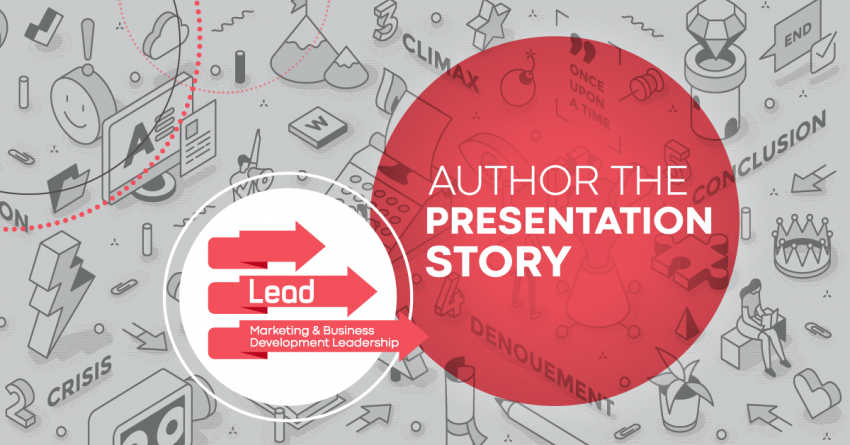Guidance for Marketing and Business Development Leadership
Storytelling is the most powerful way to sketch a vision and get the audience engaged, and there’s always a story to tell when it comes to winning a project pursuit. The most intriguing stories about the client’s project should begin to develop during the proposal phase.The most impactful and convincing stories then take on a new level of detail during the presentation phase.
As the AEC marketing leader in your firm, you are the author of this story. You can help your team unfold the most exciting storyline filled with details of innovation and problem-solving. Your goal is to affect the client’s anticipation of the plot development, eagerness for the twists and turns, and commitment to the happily ever after. Preparation that starts during the early stages of proposal planning will ensure the presenter knows the story they will tell and has time to rehearse. The supporting aids and materials can be determined and adjusted well before any presentation is required. Start early, get your team on board, and follow these easy and valuable tips to get the most out of your preparation process.
Develop the Story
Start with a positioning strategy meeting. With the help of your team, ask the following questions:
- Why should the client hire our team?
- What are the challenges? How can we change the narrative and make these a positive outcome that generates creativity and innovation?
- What makes our team different from the competing teams? Why would the client want to spend the next two years with our team?
- What advantages does our team provide the client? The project?
- How can we engage the client in the presentation and proposal story? What will make it intriguing to them?
From there, you can develop the story. Incorporate a win theme and statement. Distill your responses into a workable angle for the presentation, leading to that win statement. The idea is to leave a distinct and positive impression. Solidifying the story will give the presenter clear direction and focus. Structure the story around the client’s goals and concerns:
- Draw on anecdotal evidence
- Quantify information
- Use the Rule of Three: people remember thoughts grouped in threes
- Demonstrate how well the team works together
Support the Story
As each presenter prepares, meet regularly to provide them peer support and critique. From rehearsed delivery to targeted aids, work together to constructively improve upon the presentation content. Throughout the process, discuss with the team which projects best support the story. Ensure photos, graphics, and other images used are relevant and engaging. The quicker and more intuitively a selection committee can absorb information, the better. An effective custom graphic or matrix is more effective than a long narrative.
Constructive critique begins with encouraging feedback, suggests what to practice, then ends with positive support.
Provide timelines and deadlines and make sure the presenter has the resources they need. If they wish to see the presentation room, make an appointment to get in well before the presentation grind hits. If they need to meet with the selection committee for prior exposure, make it happen.
Did You Make the Shortlist?
As you prepare, you will learn the shortlist results—regardless of the outcome, there are undoubtedly lessons to uncover. Consider your team’s preparation to this point. It's an essential step to improving upon the next opportunity.
Improve Your Story with Feedback
Whether your team is moving to the next step or not, you’ll want to schedule a debrief. Your attention to the feedback you receive will help your team prepare for subsequent project pursuits. A debriefing session is beneficial to your firm in many ways:
- It tells you what the client liked about your proposal or presentation. This will help you continue to improve those aspects when pursuing other work with them or other clients.
- It helps you understand the areas you need to improve. It is helpful for your project team members to hear these from the client instead of getting the feedback from you. They will take value in hearing if directly from the client.
- It is a perfect opportunity to speak with the client again. They will appreciate your investment in improving and take note when you make corrections on the next opportunity.
Adjust your processes! Is there room for improvement at your firm? Processes improve with firm direction and discussion, both spearheaded by the leadership. Measure your results, and the team will be motivated by the progress. Be prepared, and your team will be too!






